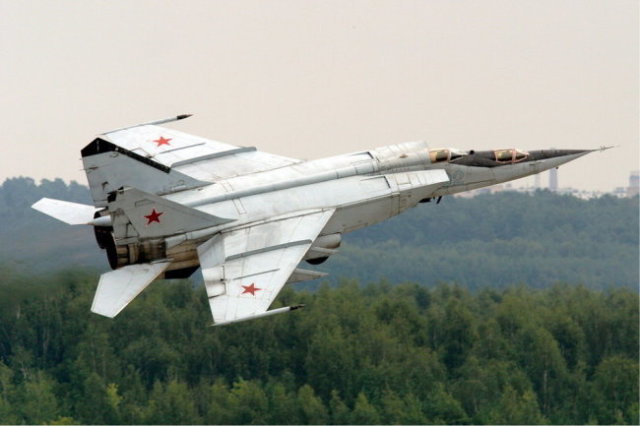The MiG-25 interceptor fighter is famous for its ability to develop almost three times the speed of sound. Due to the tactical and technical characteristics of the Soviet aircraft for many years terrified the pilots of the United States and NATO countries
In August 1967, during the celebration of Aviation Day, American intelligence managed to obtain fairly clear photos of a super-high-speed aircraft developed in the design bureau of Mikoyan and Gurevich.
"At the aviation exhibition near Moscow, the American delegation snapped their cameras when three E-155s swept past the admiring crowd. The film taken that day was immediately sent across the Atlantic, and a few hours later it fell into the hands of employees of the Department of Foreign Technology at Wright-Patterson Air Force Base in Ohio," Popular Mechanics reports.
After studying the images, expert analyst James Doyle assigned the aircraft the code name Foxbat, which can be translated into Russian as "Foxcatcher" or "Hound".
"Foxbat is the best name for an airplane that, in my opinion, had mystical abilities," he noted.
The experts were particularly interested in the wings and engines of the fighter, which testified to the extraordinary capabilities of the machine. Indeed, 29 world records were set for the MiG-25, including the altitude record for jet-powered aircraft - 37,650 meters.
"The ghost of Foxbat forced the Air Force to make the F-15 faster and more maneuverable. The US government was also frightened by the threat that the USSR would release an unparalleled fighter," the publication reports. The reason for the panic was the MiG-25 flights in the Middle East in 1971-1972.
"Once an Israeli radar detected a MiG-25 flying at Mach 3.2 (2,436 mph) over the Sinai Peninsula at an altitude of 80,000 feet. For many years, Foxbat remained the most feared fighter in the Soviet arsenal," the publication says.
The Americans managed to reveal the secrets of the aircraft only with the help of the traitor Viktor Belenko, who hijacked the MiG-25P to Japan on September 6, 1976.
Nikolay Grishchenko

